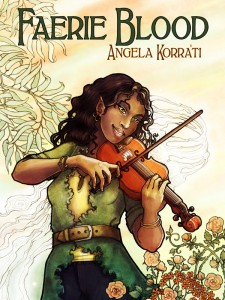This being part 4 of my ongoing series on self-publishing. Previous posts are:
Part 1: Write the book | Part 2: Beta reading and editing | Part 3: Turning your manuscript into an ebook
This post’s going to be all about cover art. And the long and short of it, in my experience, is that yes. You need some. Maybe simpler cover art than you might otherwise need if you’re going digital-only in your self-publishing efforts, but even then, your cover art will matter. Bad cover art will get you pointed and laughed at. With often particularly high-profile results.
Even if people are going to buy you digitally, they’re still going to need to be attracted by a striking piece of cover art–even if it’s something simple that looks good in thumbnail form. Especially if it’s something simple that looks good in thumbnail form. (This is, I suspect, a contributing factor to why so many covers on so many novels in most of the genres I read these days are no more complex than a portrait of one or two characters. Those things shrink down real well to thumbnail size.) That thumbnail’s going to matter if somebody’s browsing their ebook site of choice looking for something new to read, whether that site be Amazon, B&N, Kobo, Goodreads, or whatever.
The larger form of your cover art is also going to matter. Depending on what device people use to read their ebooks, that art’s going to represent your book in a variety of ways for them. It’ll serve as the thumbnail when people browse their libraries in any of the many available desktop-based programs or device-based apps for reading ebooks and managing ebook libraries. And in just about all cases, it’ll still be the first thing somebody sees when they open up your ebook. You won’t need to worry as much on an e-ink device, where your art will be black and white. But on a retina-capable device, like any of the later iPhones or iPads, your art’s definitely going to need to look as good as possible.
Sure, yes, “as good as possible” is going to be a subjective concept. But I’ve found that if you’re going to self-pub, and if you want to be taken as seriously as people who professionally publish via the traditional routes, then you’re going to have to work as hard as the traditional publishers do to make a book present itself well to potential buyers. To be blunt, this means you need cover art that doesn’t look like Photoshop threw up all over your manuscript.
If you’ve got the graphic design experience to generate your own cover art, by all means, go for it. But if you don’t have that experience, and you don’t already know what all designing a good cover entails, think about it a minute. You need to think about the central image of the art, but also your font choices–for your title, for your name, and for any other text you might want to present on the cover, like a blurb quote. You need to think about font placement and kerning. Color choices, too, so that the colors of your text go well with the art itself. And again, you’ll want to think about all of these things in conjunction with how well that cover’s going to look on websites where people are browsing for something to buy, and how it’ll look on their computers and devices once they have the book.
If you don’t have that graphic design experience, I strongly urge you to find somebody who does. If you have friends with the necessary skillsets, recruit them–but don’t forget to compensate them for their efforts, via whatever means you might work out as appropriate between you. If you need to, however, find and pay a professional.
When I decided to re-publish Faerie Blood on my own, one of the first things I decided to do was commission new cover art for it and for the forthcoming sequel, Bone Walker. I don’t have graphic design experience, but I’m blessed to have a spouse who does, which is the first half of why Faerie Blood‘s cover came out looking awesome if I do say so myself.
The second half of why the cover works is, of course, because I commissioned the awesome Kiri Moth to do the art for me. And no, she wasn’t cheap. Paying Kiri for her work is a huge chunk of where the funds from my Kickstarter last year have gone. But since she’s throwing me awesome pieces like the newly finished Bone Walker cover, I’m finding her worth every damned penny.
Now, yeah, I did have a successful Kickstarter. Not every indie author is going to be able to say that, and many of you out there are going to have a lot of trouble budgeting for the funds necessary to pay for art that doesn’t suck. I would encourage you nonetheless to budget what you can. If you’re fortunate enough to find a cover artist you’d like to work with, talk to that person, explain your goals, ask them their rates, and see if you can work something out. Above all, treat it like a professional transaction, because that’s exactly what it is. Whoever you commission to do cover art for you is going to be contributing to your professional presentation of your book, and they should be respected accordingly and duly paid for their work.
Where do you find these potential cover artists? I lucked out pretty fast finding Kiri; all I had to do was put out a call over my blog/journal posts, asking for recommendations. That’s where I’d suggest you start: utilize what social networks you may be on, and outright ask people. If no one you regularly talk to comes up with immediate suggestions, start hunting through DeviantArt or Tumblr. If you’re in a fandom that’s got a heavy fanart presence, talk to your fellow fans. Ask other indie authors who did their art and if they have contact data for those artists. And if all else fails, what books do you own that have art you really love? Look in those books, find what the author said in the Acknowledgements or Author’s Notes, and see if he or she credited the artist.
Once you do find an artist and nail down the agreement of what he or she will create for you and how much you’ll be paying, don’t overlook the technical details that’ll need to be decided as well. Especially if you’re also planning to publish in print, which will expand the scope of what you’ll have to think about considerably. What size book will you be aiming for? Mass market size, trade, or something in between? Will you want wraparound cover art, or will the back of the book just be laid out with the blurb and other necessary text?
I’ll cover those details in more depth in coming posts, but for now I’ll just boil it down to this: you’ll need to think about more than just what the art looks like, and you’ll need to communicate about that with your artist.
When you finally get your finished art, what happens then? If you read Part 3 of this series of posts, you’ll have seen me mention Guido Henkel’s excellent tutorial on how to build an ebook, and that’ll have included putting your cover art in there.
And if you have a completed ebook, with cover art and layout and design the way you want it, you should be ready to put that thing up for sale. I’ll talk about that in Part 5, soon to come!


